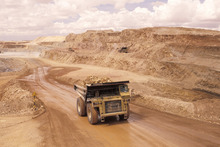Apr 22, 2015

New Zealand should take a leaf out of Australia’s book in terms of what not to do in the face of a commodities boom, says Paul Bloxham, HSBC’s chief economist for Australia and New Zealand.
Hot demand from China for Australian iron ore and coal from the early 2000s to 2012 drove one of the biggest mining booms since the gold rush, and Bloxham said Australia could have done a better job in the way it handled it.
“It is certainly the case that when times are good and commodities prices are high, governments ought to be looking to both increase their savings or to put in place reforms that allow you to continue to grow when commodities prices fall,” Bloxham said.
“Governments can make productivity-enhancing reforms, or they can more directly save funds and get their budgets back into surplus, or even potentially set up a sovereign wealth fund.
“The lessons, in retrospect, for Australia are that we did not do enough, we did not save enough when the mining boom was at its height and particularly there was not enough public saving going on at a federal or state level.”
Bloxham said the lesson for New Zealand was to make good use of the time when commodities prices were high to get the Government’s books in good shape.
“And I think New Zealand has actually done that – New Zealand’s budget deficit is a whole lot better than Australia’s,” he said.
Sydney-based Bloxham – who last year described New Zealand as having a rock star economy – remained upbeat about the economy’s prospects in the current year, despite lower dairy prices and persistent strength in the New Zealand dollar.
Bloxham acknowledged that much of the economy’s strength came down to some extraordinary circumstances – the post-earthquake rebuilding of Christchurch, last year’s milk price spike and Auckland’s property boom.
I think New Zealand has responded quite well to the circumstances that it has faced over the last few years and testament to that is the budget getting closely back into balance.
He said a measure of an economy’s strength was how it dealt with extraordinary circumstances.
“I think New Zealand has responded quite well to the circumstances that it has faced over the last few years and testament to that is the budget getting closely back into balance.”
Bloxham, commenting on the bank’s latest forecasts for the second half of 2015, said Australia’s rebalancing of growth from mining to the non-mining sectors was under way, but that it had been too slow for the economy to maintain “cruise speed”.
New Zealand’s economy continued to outperform relative to much of the developed world, supporting its “rock star” reputation.
Although dairy prices had fallen and New Zealand’s major trading partners were seeing softer conditions, the domestic economy was still booming.
New Zealand’s growth was being supported by a construction boom, which had further to run and was lifting confidence and creating jobs.
“We expect the NZ dollar to remain high, particularly relative to the Australian dollar, with parity against the AUD certainly a possibility,” he said.
The New Zealand dollar was once again strengthening against the aussie yesterday, trading in the afternoon at A99.3c, up from A98.7c late on Monday, as speculation mounted that the Reserve Bank of Australia would cut its official rate for the second time this year – by 25 basis points to a record low of 2 per cent – at its next opportunity on May 5.
Such a move would open up a 1.5 percentage point gap between Australia’s and New Zealand’s official rate, which stands at 3.5 per cent, and which is not expected to change in the near future.
HSBC, in its latest forecasts, said commodity prices had fallen surprisingly sharply, reflecting both weaker global demand and rising commodity supply. The US was still on a road to recovery, although a weaker shale oil sector was weighing on parts of the US economy, the bank said.
Falling commodity prices, particularly oil, had increased the global threat of deflation and contributed to the surreal situation where nominal interest rates were negative across much of the developed world.
It said Asia’s economies had been slowing and, so far, there was little evidence lower oil prices and looser monetary policy were providing much support for Asian growth.
